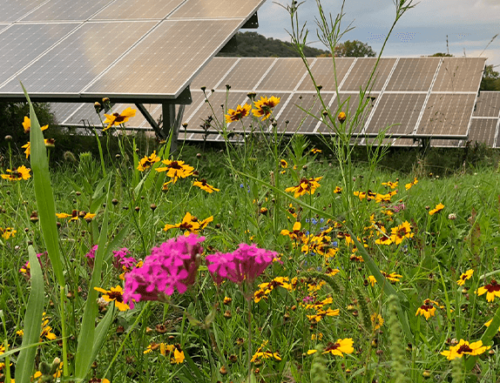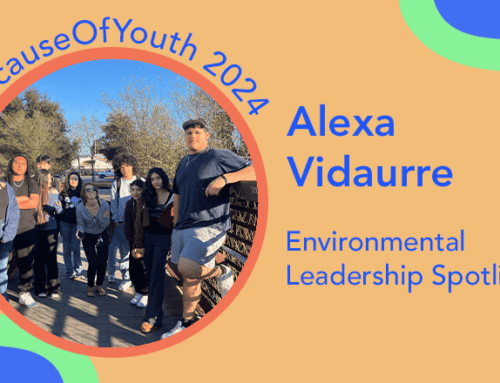The MCE Cares series focuses on the impacts of climate change, climate action strategies, and the ways you can make a difference. The climate is in our hands. What action will you take? Learn more at mceCares.org.
Transportation has surpassed electricity generation as the leading cause of greenhouse gas emissions in the United States. In California, the transportation sector alone accounts for almost 40% of total emissions. Sustainable transportation focuses on reducing environmental impact while equitably meeting the mobility needs of everyone. Sustainable transportation can reduce traffic and transportation costs, improve air quality, and support healthier lifestyles. Most importantly, it helps lower emissions to mitigate climate change and create a healthy and equitable future for all.
Sustainable Transportation Options
Whether you choose to travel less or find more sustainable methods, here’s how you can green your transportation.
Walking
Commuting on foot is emission and cost free. Walking is a terrific way to get exercise, reduce stress, and see your community through new eyes. Visit CalBike to find walking and biking routes in your area.
Cycling
Biking cuts down on transportation costs and reduces emissions. An added benefit is that it helps you stay active and is associated with a lower risk of heart disease and cancer. If you live in a hilly area consider investing in an e-bike for a sustainable, fast, and easy commute. When purchasing a bike, consider supporting local businesses like Mike’s Bikes or The New Wheel that run on 100% renewable energy.
Public Transportation
Public transportation reduces the total number of vehicles on the road. Someone who commutes 20 miles per day can reduce their annual CO2 emissions by over 48,000 pounds by using public transit. The Bay Area offers several options, including BART, bus, ferry, and paratransit. Use an online commuter tool to find routes near you. For on-demand driving needs, consider using a car sharing service for a more sustainable alternative to car ownership.
Carpooling
Carpooling keeps unnecessary vehicles off the road, which lowers emissions and improves air quality. You can save on gas, maintenance, and parking fees and shorten your commute by reducing traffic and using HOV lanes. Resources like 511 SF Bay can connect you with other carpoolers heading in your direction.
Electric Vehicles (EVs)
EVs run on electricity instead of diesel or gas. Powering an EV with renewable energy is an effective option for drivers looking to save money and reduce their carbon footprint. Compared to EV drivers who charge up with MCE’s Deep Green 100% renewable energy, gas car drivers pay about 200% more annually to fill their tanks.
The two basic types of EVs are battery EVs (BEVs), which run solely on electricity, and plug-in hybrid EVs (PHEVs), which run on electricity and use gas as backup. This EV Savings Calculator compares models to help you find a vehicle that matches your budget and lifestyle. You can charge your EV at home with Level 1 charging in any standard outlet or you can upgrade to a 240-volt outlet for faster Level 2 charging. Most large appliances like ovens and dryers use 240-volt outlets. If you can’t charge at home, look for one of the 400+ public EV charging stations across MCE’s service area.
Local Resources
Here are local resources to help you commute more sustainably in MCE’s service area.
Drive Clean Bay Area
Drive Clean Bay Area offers incentives and resources to help Bay Area residents switch to an EV. The nonprofit collaboration was launched by MCE, Transportation Authority of Marin, and the Bay Area Air Quality Management District to encourage emission-free transportation. Drive Clean Bay Area provides guides to switching to EVs, hosts regular events to help residents make the switch, and runs biannual savings events with discounted pricing on a variety of new BEVs and PHEVs. Their next EV Discount Campaign launches in November 2021.
Marin Commutes
Marin Commutes connects residents and commuters who travel to and from Marin County to sustainable transportation options like EVs and public transportation. They even offer tips to encourage healthy and productive telecommuting.
Solano Mobility
Solano Mobility helps residents find more sustainable commuting options. Solano Mobility also helps ensure safe and healthy transportation options by offering specialized programs for older adults, people with disabilities, and students.
V-Commute
V-Commute is a Napa-based organization that encourages alternative forms of transportation by connecting commuters to local programs such as The Bay Area Commuter Benefits Program. V-Commute also hosts challenges to encourage residents to bike, walk, carpool, telework, or take public transit.
511 Contra Costa
511 Contra Costa connects commuters to a variety of local incentives available for biking, walking, public transportation, and carpooling. Their Guaranteed Ride Home program also reimburses commuters for transportation needs during unexpected times, like illness or missing your carpool.
How MCE Supports Sustainable Transportation
Here’s what MCE offers to support sustainable transportation.
MCE’s EV Rebates for Qualifying Customers
MCE is offering a $3,500 rebate for qualifying customers to purchase or lease new EVs. MCE can also help qualifying customers combine the rebate with federal, state, and local incentives.
EV Charging Station Rebates for Workplaces & Multifamily Properties
MCE’s EV charging rebate program covers both large and small charging projects (2−20+ ports). The program allows market rate and low-income multifamily properties and workplaces to save up to $3,000 per port. If the properties opt up to Deep Green 100% renewable energy, they can get an additional $400 per charging port. MCE will provide technical assistance in the application and installation process.
MCE’s EV Charging Rates
Take advantage of MCE’s residential EV rates for a cost-effective way to charge your EV at home. MCE’s EV rates are flat, that is, they’re based on the time of day that you use electricity as opposed to a tiered rate, which is based on the amount of electricity you use. MCE offers incentives for charging during off-peak usage hours, like at night when charging is least expensive. This rate supports the grid by shifting load away from high-peak usage times when there’s more strain on the grid to times when generation is plentiful and overall usage is low.
The climate is in our hands. What action will you take?






